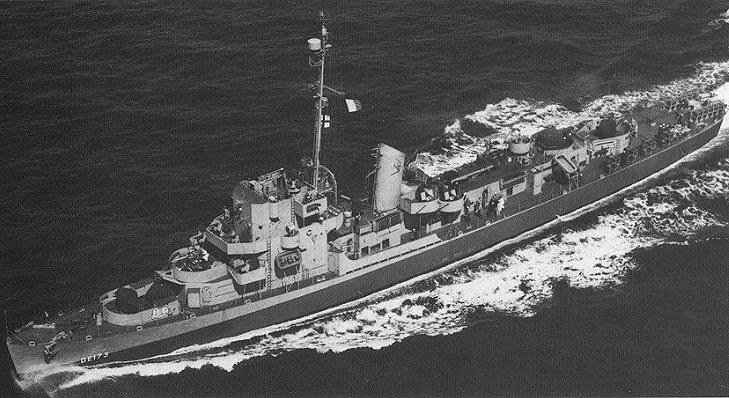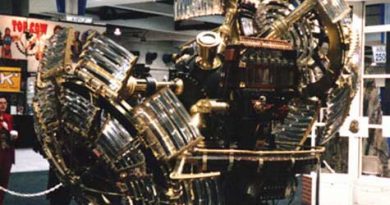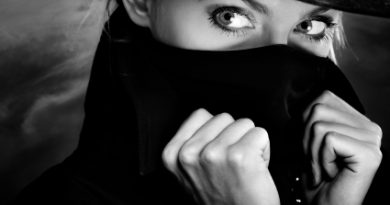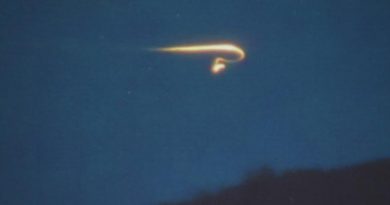Conspiracy Theories – The Philadelphia Experiment
The Philadelphia Experiment is the conspiracy theory regarding a naval military experiment at the Philadelphia Naval Shipyard in Philadelphia, Pennsylvania, USA, sometime around October 28, 1943, in which the U.S. Navy destroyer escort USS Eldridge was to be rendered invisible (i.e., cloaked) to human observers for a brief period of time. That is also referred to sometimes as Project Rainbow.
The story is widely regarded as a hoax, while the U.S. Navy maintains that no such experiment occurred, and details of the story contradict well-established facts about the Eldridge. It has nonetheless caused ripples in conspiracy theory circles, and elements of the Philadelphia Experiment are featured in other government conspiracy theories.
Synopsis
Several different and sometimes contradictory versions of the alleged experiment have circulated over the years. The following synopsis illustrates key story points common to most accounts.
The experiment was allegedly based on an aspect of the unified field theory, a term coined by Albert Einstein. The Unified Field Theory aims to describe mathematically and physically the interrelated nature of the forces that comprise electromagnetic radiation and gravity, although to date, no single theory has successfully expressed these relationships in viable mathematical or physical terms.
According to the accounts, it was believed that some version of this Unified Field Theory would enable the Navy to use large electrical generators to bend light around an object so that it became essentially invisible. The Navy would have regarded this as being of obvious military value, and according to the accounts, subsequently it sponsored the experiment.
Another version of the story proposes that researchers were preparing magnetic and gravitational measurements of the seafloor to detect anomalies, supposedly based on Einstein’s attempts to understand gravity. In this version there were also related secret experiments in Nazi Germany to find antigravity, allegedly led by SS-Obergruppenführer Hans Kammler.
In most accounts of the experiment, the destroyer escort USS Eldridge was fitted with the required equipment at the Philadelphia Naval Yard. Testing began in the summer of 1943, and it was supposedly successful to a limited degree. One test, on July 22, 1943, resulted in the Eldridge being rendered almost completely invisible, with some witnesses reporting a “greenish fog” appearing in its place. However, crew members supposedly complained of severe nausea afterwards. Also, it is said that when the ship reappeared, some sailors were embedded in the metal structures of the ship, including one sailor who ended up on a deck level below that where he began, and had his hand embedded in the steel hull of the ship. At that point, it is said that the experiment was altered at the request of the Navy, with the new objective being solely to render the Eldridge invisible to radar. None of these allegations have been independently substantiated to any satisfactory degree.
The conjecture then alleges that the equipment was not properly re-calibrated, but in spite of this, the experiment was repeated on October 28, 1943. This time, the Eldridge not only became invisible, but she physically vanished from the area in a flash of blue light and teleported to Norfolk, Virginia, over 200 miles away. It is claimed that the Eldridge sat for some time in full view of men aboard the ship SS Furuseth, whereupon the Eldridge vanished from their sight, and then reappeared in Philadelphia at the site it had originally occupied. It was also said that the warship travelled back in time for about 10 seconds.
Many versions of the tale include descriptions of serious side effects for the crew. Some crew members were said to have been physically fused to bulkheads, while others suffered from mental disorders, and still others supposedly simply vanished. It is also claimed that the ship’s crew may have been subjected to brainwashing, in order to maintain the secrecy of the experiment.
Origins of the story
Morris Jessup and Carlos Miguel Allende
In 1955, Morris K. Jessup, an amateur astronomer and former graduate-level researcher, published The Case for the UFO, a book about unidentified flying objects that contains some theorizing about the different means of propulsion that flying-saucer-style UFOs might use. Jessup speculated that antigravity or the manipulation of electromagnetism may be responsible for the observed flight behavior of UFOs. He lamented, both in the book and during the publicity tour that followed, that space flight research was concentrated in the area of rocketry, and that little attention had been paid to other theoretical means of flight, which he felt might ultimately be more fruitful. Jessup emphasized that a breakthrough revision of Albert Einstein’s “Unified Field Theory” would be critical in powering a future generation of spacecraft. On January 13, 1955, Jessup received a letter from a man who identified himself as one “Carlos Allende”. In the letter, Allende informed Jessup of the “Philadelphia Experiment”, alluding to two poorly sourced contemporary newspaper articles as proof. Allende directly responded to Jessup’s call for research on the “Unified Field Theory”, which he referred to as “UFT”. According to Allende, Einstein had solved the theory, but had suppressed it, since mankind was not ready for ita confession that the scientist allegedly shared with the mathematician and philosopher Bertrand Russell. Allende also said that he had witnessed the Eldridge disappear and reappear while serving aboard the SS Andrew Furuseth, a nearby merchant ship. Allende further named other crew members with whom he served aboard the Andrew Furuseth, and claimed to know the fate of some of the crew members of the Eldridge after the experiment, including one whom he witnessed disappearing during a chaotic fight in a bar. Although Allende claimed to have observed the experiment while on the Andrew Furuseth, he provided no substantiation of his other claims linking the experiment with the Unified Field Theory, no evidence of Einstein’s alleged resolution of the theory, and no proof of Einstein’s alleged private confession to Russell.
Jessup replied to Allende by a postcard, asking for further evidence and corroboration.
The reply to that came months later. However, this time the correspondent identified himself as “Carl M. Allen”. Allen said that he could not provide the details for which Jessup was asking, but he implied that he might be able to recall some by means of hypnosis. Suspecting that Allende/Allen was a fraud, Jessup discontinued the correspondence.
It has been claimed that Jessup’s use of a postcard in responding to Allende publicized their correspondence. This possibility, some theorists consider, was plausible cause for the Government to intervene, disrupting the conversation by replacing Allende with Allen, who was possibly a CIA agent monitoring Allende’s inbound mail. This theory is quite suspect for several reasons, not the least of which is the fact that neither domestic intelligence nor communications monitoring within the United States is within the purview of the CIA. More importantly, Allende was accessible to the community of “Philadelphia Experiment” researchers for years, discounting any alleged intervention by the Government.
The Office of Naval Research and the Varo annotation
In early 1957, Jessup was contacted by the Office of Naval Research (ONR) in Washington, D.C., and was asked to study the contents of a parcel that it had received.] Upon his arrival, Mr. Jessup was astonished to find that a paperback copy of his UFO book had been mailed to the ONR in a manila envelope marked “Happy Easter.” Furthermore, the book had been extensively annotated by hand in its margins, and an ONR officer asked Jessup if he had any idea as to who had done so.
The lengthy annotations were written with three different colors of ink, and they appeared to detail a correspondence among three individuals, only one of which is given a name: “Jemi”. The ONR labelled the other two “Mr A.” and “Mr B.” The annotators refer to each other as “Gypsies,” and discuss two different types of “people” living in outer space. Their text contained non-standard use of capitalization and punctuation, and detailed a lengthy discussion of the merits of various suppositions that Jessup makes throughout his book, with oblique references to the Philadelphia Experiment, in a way that suggested prior or superior knowledge (for example, “Mr B.” reassures his fellow annotators, who have highlighted a certain theory of Jessups).
Based on the handwriting style and subject matter, Jessup identified “Mr A.” as Allende / Allen. Others have suggested that the three annotations are actually from the same person, using three pens.[citation needed]
The annotated book sparked such interest that the ONR funded a small printing of the volume by the Texas-based Varo Manufacturing Company. A 2003 transcription of the annotated “Varo edition” is available online, complete with three-color notes.
Later, the ONR contacted Jessup, claiming that the return address on Allende’s letter to Jessup was an abandoned farmhouse. They also informed Jessup that the Varo Corporation, a research firm, was preparing a print copy of the annotated version of The Case for the UFO, complete with both letters he had received. About a hundred copies of the Varo Edition were printed and distributed within the Navy. Jessup was also sent three for his own use.
Jessup attempted to make a living writing on the topic, but his follow-up book did not sell well, and his publisher rejected several other manuscripts. In 1958, his wife left him, and his friends described him as being depressed and somewhat unstable when he travelled to New York. After returning to Florida, he was involved in a serious car accident and was slow to recover, apparently increasing his despondency. He allegedly committed suicide in 1959.
Evidence
Research into the supposed “Experiment” has revealed many contradictions and inconsistencies. In addition, no scientific support for the described phenomena or the purported events exists.
Evidence and research
Many observers argue that it is inappropriate to grant much credence to an unusual story promoted by one individual, in the absence of more conclusive corroborating evidence. An article written by Robert Goerman for Fate magazine in 1980, determined that “Carlos Allende” / “Carl Allen” was in fact Carl Meredith Allen of New Kensington, Pennsylvania, who had an established history of psychiatric illness, and who may have fabricated the primary history of the experiment as a result of his mental illness. Some sources indicate that Allen was a known prankster, and that the “Philadelphia Experiment” story may have been an elaborate hoax.
The historian Mike Dash notes that many authors who publicized the “Philadelphia Experiment” story after Jessup seemed to have conducted little or no research of their own: through the late 1970s, for example, Allende / Allen was often described as mysterious and difficult to locate. But after only a few telephone calls, Goerman was able to determine Allende / Allen’s true identity. Others speculate that much of the key literature emphasizes dramatic embellishment rather than pertinent research. Though Berlitz and Moore’s famous account of the story (The Philadelphia Experiment: Project Invisibility) contained much supposedly factual information, such as transcripts of an interview with a scientist involved in the experiment, their work has also been criticised for plagiarising key story elements from the fictitious novel Thin Air which was published a year earlier.
Scientific aspects
No fully developed Unified Field Theory currently exists, although it is still a subject of ongoing research. William Moore’s book on the so-called “Philadelphia Experiment” claims that Albert Einstein completed, and subsequently destroyed, a theory before his death.
Also, shortly before his death in 1943, Nikola Tesla supposedly claimed to have completed some kind of a “Unified Field Theory”. It was never published.
While very limited “invisibility cloaks” have recently been developed using metamaterial, these are unrelated to theories linking electromagnetism with gravity.
Timeline inconsistencies
The USS Eldridge was not commissioned until August 27, 1943, and it remained in port in New York City until September 1943. The October experiment allegedly took place while the ship was on its first shakedown cruise in the Bahamas, although proponents of the story claim that the ship’s logs might have been falsified, or else still be classified.
The Office of Naval Research (ONR) stated in September 1996 that “ONR has never conducted investigations on radar invisibility, either in 1943 or at any other time”. Pointing out that the ONR was not established until 1946, it denounces the accounts of the Philadelphia Experiment as complete “science fiction”.
A reunion of navy veterans who had served aboard the USS Eldridge told a Philadelphia newspaper in April 1999 that their ship had never made port in Philadelphia. Further evidence discounting the Philadelphia Experiment timeline comes from the USS Eldridges complete World War II action report, including the remarks section of the 1943 deck log, available on microfilm.
Alternative explanations
Researcher Jacques Vallée describes a procedure on board the USS Engstrom (DE-50), which was docked alongside the Eldridge in 1943. The operation involved the generation of a powerful electromagnetic field on board the ship in order to degauss it, with the goal of rendering the ship undetectable or “invisible” to magnetically-fused undersea mines and torpedoes. This system was invented by a Canadian, and the Royal Navy and other navies used it widely during the Second World War. British ships of the era often included such degaussing systems built into the upper decks (the conduits are still visible on the deck of the HMS Belfast (C35) in London, for example). Degaussing is still used today. However, it has absolutely no effect on visible light or radar. Vallée speculates that accounts of the USS Engstroms degaussing might have been garbled and confabulated in subsequent retellings, and that these accounts may have influenced the story of the so-called “Philadelphia Experiment”.
According to Vallée, a Navy veteran who served on board the USS Engstrom noted that the Eldridge might indeed have travelled from Philadelphia to Norfolk and back again in a single day at a time when merchant ships could not: by use of the Chesapeake and Delaware Canal and the Chesapeake Bay, which at the time was open only to naval vessels. Use of that channel was kept quiet: German submarines had ravaged shipping along the East Coast during Operation Drumbeat, and thus military ships unable to protect themselves were secretly moved via canals to avoid the threat. It should be noted that this same veteran claims to be the man that Allende witnessed disappearing at a bar. He claims that when the fight broke out, friendly barmaids whisked him out the back door of the bar before the police arrived, because he was under age for drinking. They then covered for him by claiming that he had disappeared.



